VISIT DEAL CASTLE WITH ENGLISH HERITAGE MEMBERSHIP
- Up to 6 Kids go free
- Free Parking at English Heritage
- Receive our Handbook
- Unlimited access to over 400 days out

TICKETS & PRICES
Adults: £7.70
Children 5-17 Years: £4.00
Families (2 adults, up to 3 Children): £19.40
Families (1 adult, up to 3 Children): £11.70
Visiting Deal Castle
Deal Castle is an artillery fort commissioned by King Henry VIII around 1539 to defend Downs' anchorage against an invasion by France or the Holy Roman Empire. Today, Deal Castle is open to tourists, and visitors can view the grounds by purchasing a ticket from English Heritage.
Parking
There is a large car park with disabled parking next to Deal Castle. Parking is free for English Heritage members, but they must obtain a pay and display ticket from the parking machine (with their English Heritage membership ID). Charges apply for non-members. The minimum payment for parking is 50 pence, with £1.10 covering a single vehicle for up to one hour. There is a three-hour limit per vehicle, so plan your visit accordingly.
Additional parking is available at the Tides car park about .5 kilometres (3 mi) west of Deal Castle. Parking is free for up to 4 hours. It is about a one-minute drive from Deal Castle via Gilford Rd and Park Ave, or a seven-minute walk via Gilford Rd.
Price
Admission fees for Deal Castle vary depending on the day and season. For exact pricing on the date of your visit, check out the Deal Castle Calendar on the English Heritage website.
Tickets purchased online ahead of time (up to 8:45 a.m. on the day of your visit) are eligible for at least 10 percent off with the advance-booking discount. Visitors may also purchase tickets on-site without the discount.
For an idea of pricing, the table below shows Deal Castle prices on a “Standard” day in June (the advance-booking discount is included in the price):
|
Deal Castle Ticket Prices - June - Standard |
||
|
Ticket Type |
With Donation |
Without Donation |
|
Members |
Free |
Free |
|
Adult |
£8.50 |
£7.70 |
|
Child (5-17 Years) |
£4.50 |
£4.00 |
|
Student (with Valid ID) |
£7.50 |
£6.80 |
|
Family (2 Adults, Up to 3 Children) |
£21.50 |
£19.40 |
|
Family (1 Adult, Up to 3 Children) |
£13.00 |
£11.70 |
|
Senior (65+) |
£7.50 |
£6.80 |
Opening
The castle is open daily from 10 a.m. to 5 p.m. However, hours may vary depending on the date, season, or whether there are on-site events taking place. For exact opening times on the day of your visit, please view the Deal Castle page on the English Heritage website.
The grounds are busiest between 11 a.m. and 2 p.m. on bank holidays and weekends.
Location and Access
The physical address of Deal Castle is:
Deal Castle
Marine Rd
Walmer
Deal
CT14 7BA
Visitors arriving from the northeast near Minster can access Deal Castle via A299 and A256. Those arriving from the south near Dover should use A258 to Deal Rd. Those arriving from west near Ashford can use A2.
Deal Station is the nearest railway terminal and is on the Kent Coast Line and connects all the way from Ramsgate to the Dover Priory. The station is about .8 kilometres (.5 mi) from the fort, about a three-minute drive or a nine-minute walk from the castle.
Buses to Deal Castle are also available through Stagecoach East Kent and Regent Coaches. These bus terminals include the following service routes:
- Stagecoach East Kent: 12, 13, 13A, 14, 80A, 82, 82A, and 93
- Regent Coaches: 541, 542, and 544
Know Before You Go
- Deal Castle has an on-site gift shop. The gift shop offers a range of themed gifts and souvenirs, including toy armour and weapons, wine, and candies.
- There are no on-site cafés or restaurants. There is a small selection of snacks and cold beverages in the gift shop.
- Much of the site is inaccessible to wheelchair and mobility-scooter users. The interior of Deal Castle includes multiple areas that require access via staircase (including spiral staircases). There is no lift access.
- Portable toilets may be the only toilet facilities available during construction. As English Heritage works to renovate the bathrooms at Deal Castle, temporary toilets are the only toileting option. Unfortunately, these toilet facilities are not fully accessible, nor do they offer baby-changing facilities.
- No dogs are permitted on-site. Exceptions are made for assistance dogs. Visitors with service dogs may request a dog bowl at the site entrance.
- There are several on-site hazards to watch out for. Because Deal Castle is a historic site, visitors may encounter uneven surfaces, stone walkways, steep staircases, and other hazards. It’s important to remain vigilant when exploring the grounds.
Deal Castle Events
Deal Castle has been the site of numerous events over the years. Past events have included on-site art exhibitions, ghost tours, and festivals based in Kent. For a list of events happening now or in the future, view the Deal Castle’s Events page on the English Heritage website.
Deal Castle Tours
Guided tours of Deal Castle and its grounds are available when booked in advance. Prices for booking a site tour cost £2.75 per person. Tour transcripts are available, but must be requested on arrival. To book a castle tour at the fort, see the Group Visits page for Deal Castle.
Places To Stay Nearby
Waterfront Hotel
.5 km (.3 mi) south
This quaint, cosy hotel is about a one-minute drive (or seven-minute walk) from Deal Castle via A258. The popular seaside hotel was built in the 1700s and once frequented by sailors. Today, it sits directly in front of the Deal Beach pier, with several rooms offering a waterfront view. Single, double, triple, and family rooms are available, each offering free WiFi, a tea and coffee maker, and complimentary toiletries. Booking includes a full breakfast.
Premier Inn Dover Central (Eastern Ferry Terminal)
12.9 km (8 mi) south
Sitting along the Dover seaside, Premier Inn Dover Central offers spectacular waterfront views. The convenient location is also near the Eastern Ferry Terminal. Here, guests have access to double, twin, family, or accessible rooms, each including a vanity area, hairdryer, tea and coffee facilities, and free WiFi. The on-site restaurant offers breakfast and dinner, and the option to purchase a meal deal for discounts on food during your stay.
Travelodge Dover
13.4 km (8.3 mi) south
Travelodge Dover is about 15-minutes south of Deal Castle and within 3.2 kilometres (2 mi) of various attractions, including Dover Castle, the White Cliffs, and Western Heights. Standard, family, and accessible rooms are available with WiFi (free for 30 minutes or £3 for 24 hours). An on-site bar café offers hot and cold beverages, alcoholic drinks, and various food options. The hotel is within walking distance of various restaurants, stores, and a cinema.
History of Castle
Deal Castle is an artillery fort and part of the “castles of the Downs,” that helped protect the Downs from seaside attacks. The stone castle was supported by several nearby forts and has defended the coast line for over 500 years.
Time Line
- 1539 - (First Draft Planned)
King Henry VIII commissioned the construction of several defences along the English coast to protect against invasion. The first architectural plans were laid out in 1539, and likely shown to the King for approval.
- 1540 - (Work Begins on Deal Castle)
Deal Castle was to be the largest and centre-most castle out of three Tudor artillery forts, including Walmer and Sandown. Once work began, it progressed quickly. The castle was nearly completed after only eight months.
- 1558 - (Castle Reinforced)
Nearly two years after its construction, Deal Castle is reinforced as fears increase over the possibility of a French attack.
- 1570 - (Bastions Filled)
To accommodate additional weaponry on top, the primary bastions were filled with stones and earth.
- 1588 - (Defences Mobilised)
When the Spanish armada threatened the English coast, Queen Elizabeth I ordered the defences of Deal Castle be mobilised in case of an attack.
- 1615 - (Castle in Disrepair)
Deal Castle was in a state of disrepair. The curtain wall had been mangled by weathering and erosion. At the time, it was also reported that the moat had been flooded by seawater, causing the foundation of the fort to become unstable.
- 1618 - (Garrison Moved)
Due to the poor state of the castle, much of the garrison refused to reside in the castle keep. Instead, they moved to the nearby village, leaving only a handful of men to protect the castle after hours.
- 1630s - (Castle Repairs)
Growing tensions among the Spanish, French, and Dutch caused fears in the Downs to rise. As such, various repairs were completed on Deal Castle to make ready in case of an attack.
- 1639 - (Battle of the Downs)
The Battle of the Downs was visible from Deal Castle. The Dutch fired at the Spanish armada, sinking dozens of ships. As a result, over 2,000 Spanish sailors fled to shore to escape the Dutch.
- 1642 - (Castle Seized)
During the First English Civil War, Deal Castle was overtaken by Parliamentarian forces.
- 1648 - (Deal Surrenders)
Parliamentarian forces held much of the Downs. Royalists attempted to besiege Deal Castle months into 1648, but their plan failed when the garrison fought back. Prince Charles, in another attempt to regain control of the Downs, organised an assault against Parliamentarian forces. However, his plans didn’t come to fruition, and instead led to several bloody battles and heavy losses, ultimately ending in Royalist defeat. As a result, Deal surrendered.
- 1660 - (Castle Restored to the Crown)
After Charles II was placed back on the throne, Deal Castle once again came under the ownership of the Crown.
- 1652 - (Maintained and Equipped)
During the First Anglo-Dutch War, Deal Castle was made ready again. Gunpowder was stored within the grounds, various earthworks were erected, and soldiers were garrisoned on-site.
- 1688 - (Glorious Revolution)
Tensions began to climb between England and Ireland. As such, the local townsfolk took over the castle (essentially to endorse William of Orange, later King William III) and began preparing the castle for defence (though an Irish attack never occurred).
- 18th Century - (Captain’s Quarters Built)
A residence for the captain of the castle was constructed. Throughout much of the 18th century, Deal Castle continued to be used as a military fort, and was equipped with additional weaponry. By 1729, Sir John Norris, naval officer and castle captain, completed renovations to Deal Castle, The changes were carried out to make the castle more appealing to his personal tastes.
- 1794 - (Infantry and Calvary Protection)
William Pitt the Younger organised fencibles at the castle with the purpose of protecting the village of Deal.
- 1802 - (Building Rivalry)
William Pitt the Younger executed multiple military drills at Deal Castle. During the same year, Lord Carrington commissioned various renovations in hopes of “one-upping” William Pitt the Younger who had completed multiple repairs at Walmer Castle.
- 1829 - (Private Residence)
Deal Castle had little military value during much of the 19th century, so it became more of a private residence for the captain. As a result, debates concerning residential taxation came about. However, nothing was formally set in stone.
- 1904 - (Tourist Attraction)
The castle was officially denounced as a military site. From that point on, it was handed over to the care of the Office of Works. The Office of Works opened Deal Castle to the public.
- 1940 - (World War II Service)
Though Deal Castle had been deemed useless for military purposes, World War II called for its reinstatement as a military site to defend the coast against German forces. During the Blitz, the Germans assaulted Deal Castle, laying waste to much of the captain’s quarters. This led William Birdwood to move out of the castle.
- 1951 - (Ministry of Public Buildings and Works)
William Birdwood was the last captain to live in Deal Castle. After his death, the building was no longer used as a private home. It was transferred to the care of the Ministry of Public Buildings and Works.
- 1952 to 1958 (Castle Restoration)
Multiple renovations and various restoration work was completed during much of the 1950s. During this time, many of the 18th-century modifications were removed.
- 21st Century - (English Heritage Takes Over)
Today, English Heritage is run by English Heritage as a popular tourist attraction.
Deal Castle Occupants
- 1540 Thomas Wingfield became the first captain of Deal Castle. During the same year, Anne of Cleves stopped at Deal Castle on her way to meet King Henry VIII.
- 1573 Queen Elizabeth I stopped by to inspect the castle after its reinforcement.
- Early 1600s - William Byng was captain, and wrote numerous reports detailing the poor state of the castle
- 1640s - Colonel Rainsborough replaced William Byng after Parliament took over the castle.
- 1648 - Colonel Nathaniel Rich is put in charge of the repairs of Deal Castle after the Battle of the Downs.
- 1729 - Sir John Norris becomes captain and renovates the castle as his residence.
- 1790s-1800s - William Pitt the Younger carried out many military drills at Deal Castle.
- 1815 - Robert Smith was the last captain of Deal Castle who actually lived on-site.
- 1940 - William Birdwood, who used the grounds as a personal residence, was forced to move out after a World War II assault by German forces.
Deal Castle Architecture
General Layout
Deal Castle is a 16th-century structure used as an artillery fort. It was constructed using three different types of stone, including Kentish Ragstone, handmade bricks, and reused Caen stone. The castle was among a group of castles commissioned by King Henry VIII to protect Downs’ anchorage. Deal Castle was bigger than Sandown and Walmer, measuring approximately 71 metres by 66 metres (234 ft by 216 ft) and covering .34 hectares (.85 acres).
Original Layout
The original layout included a moat, curtain wall, high keep, six half-circle bastions, and six circular bastions. Though it was designed primarily for defence, it was later used as a residence.
Unfortunately, Deal Castle had multiple design flaws that would make it vulnerable to enemy attacks. It required far too many weapons, preventing it from ever being fully equipped, and the lower bastions were low and thick, making them an easy target.
Gatehouse
Those visiting Deal Castle in its heyday would cross a stone path where they’d encounter a drawbridge. After the drawbridge lowered, they would walk above the 20-metre (66 ft) wide moat and atop a beautiful walled garden to access the gatehouse (the western bastion). To enter the gatehouse, they’d cross through two massive iron doors.
Once inside the iron doors, they’d remain in a passageway protected by a portcullis and five holes in the ceiling. These holes allowed the garrison to defend the gatehouse from intruders. They could shoot guns or drop items from these holes to injure or kill enemies.
Bastions
Deal Castle’s bastions are the focal point of the castle. The 26-metre (86 ft) wide semi-circular structures are flanked by six additional circular bastions. The western-most round bastion acted as the gatehouse. The bastion walls were 4.6 metres (15 ft) in thickness.
Artillery
Four levels of artillery protected the castle during its early days. The heaviest weaponry sat on the upper levels of the bastions and the keep. Deal Castle had over 60 firing positions and 50 gun loops in case of close combat. Like its sister castles, Deal Castle had vents throughout the basement to allow smoke to dissipate after firing weapons.
Keep
The tall keep had several floors. The ground floor featured radial walls that were divided by partitions. This level is where the garrison would have resided. The first level of the keep was used by the captain, and the basement was used primarily for stores. There was a fireplace and oven inside the keep as well.
Modern Layout
Guests visiting Deal Castle today will cross over a dry moat using a permanent wooden bridge, not a drawbridge. The walled garden that once sat below the path to the gatehouse is no longer there. However, the gatehouse boasts its original iron doors, and they’re excellently preserved.
The outer bastions were no longer in use since the 1570s, as they were filled with dirt to make them able to withstand the weight of additional weaponry.
Deal Castle’s keep no longer has the partitions on each floor, but the radial walls still stand. The original ovens and fireplace also survive. Today, much of the stonework on the first floor dates to the 1720s, with little evidence of the original Tudor design.
Images of Deal Castle
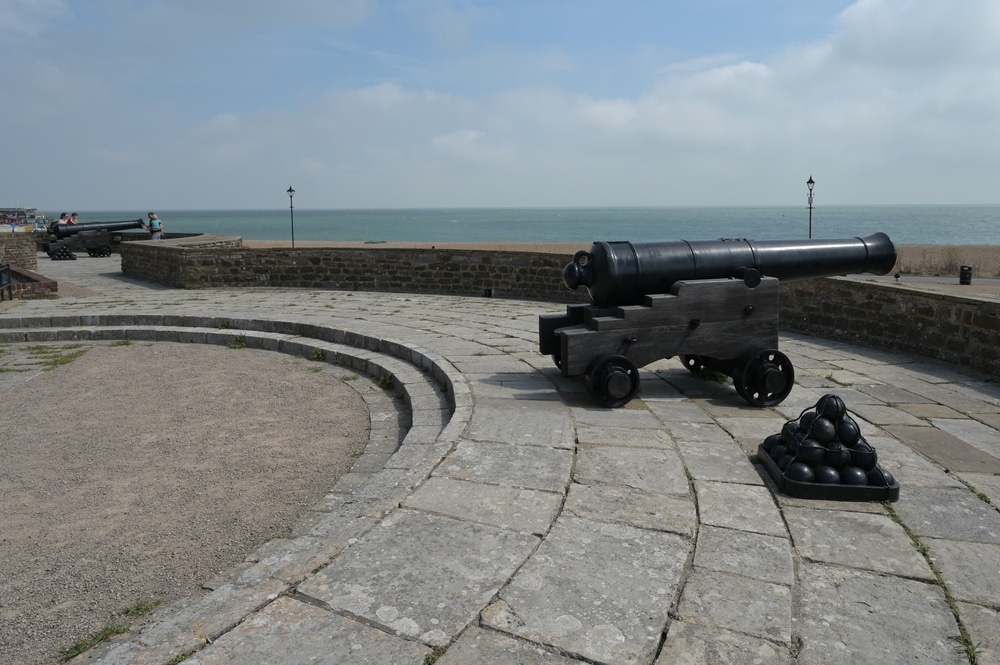
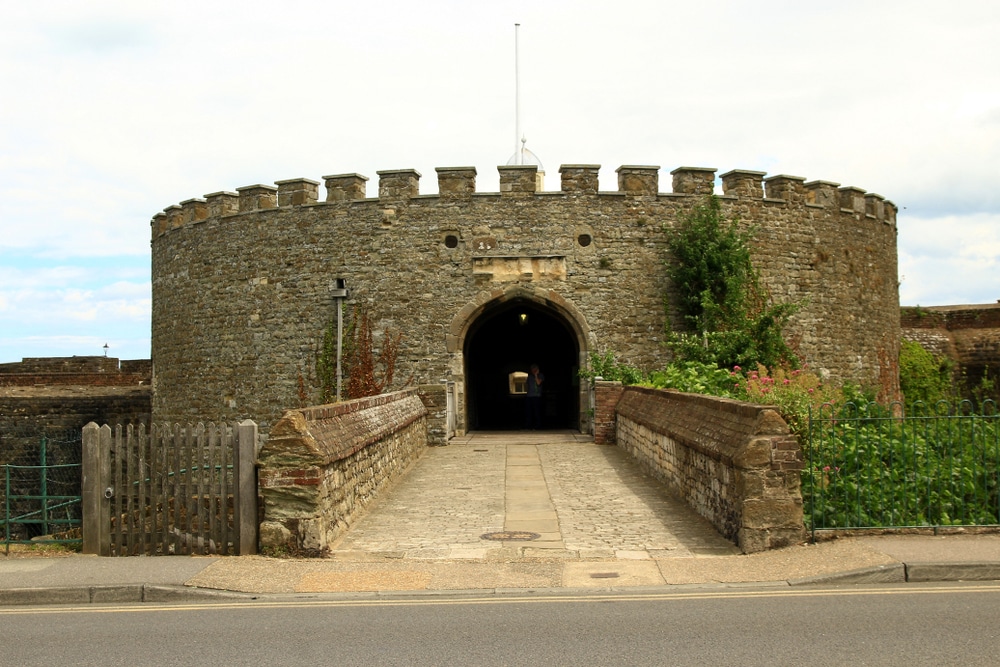
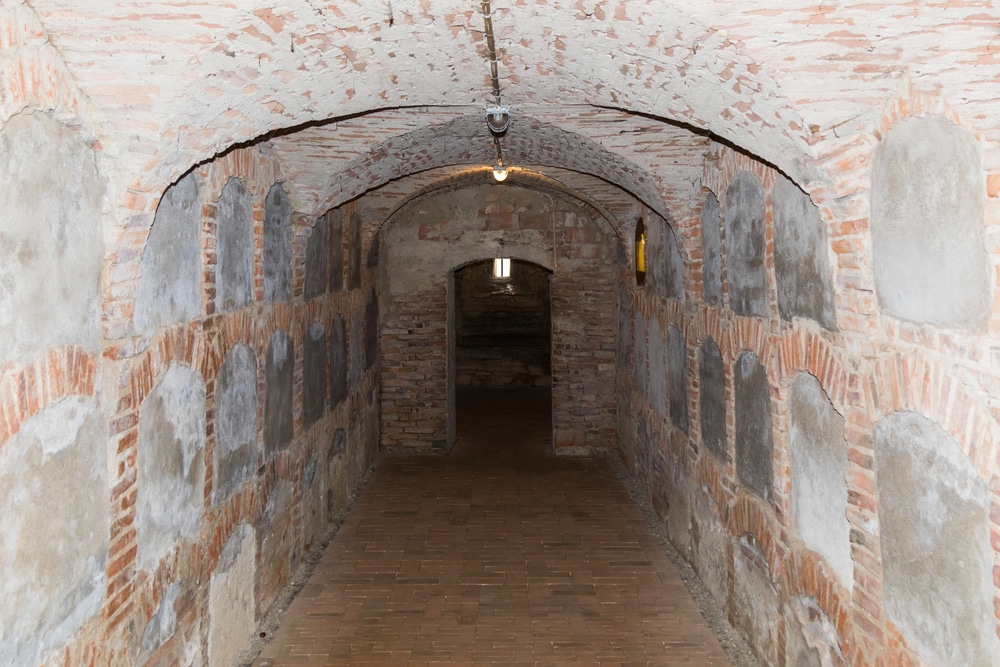
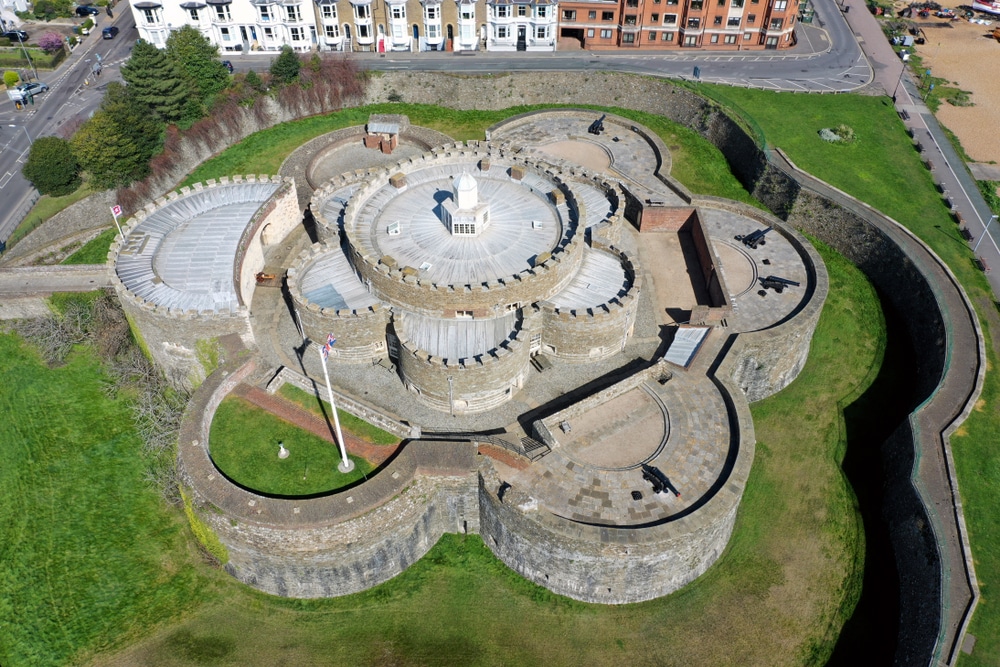
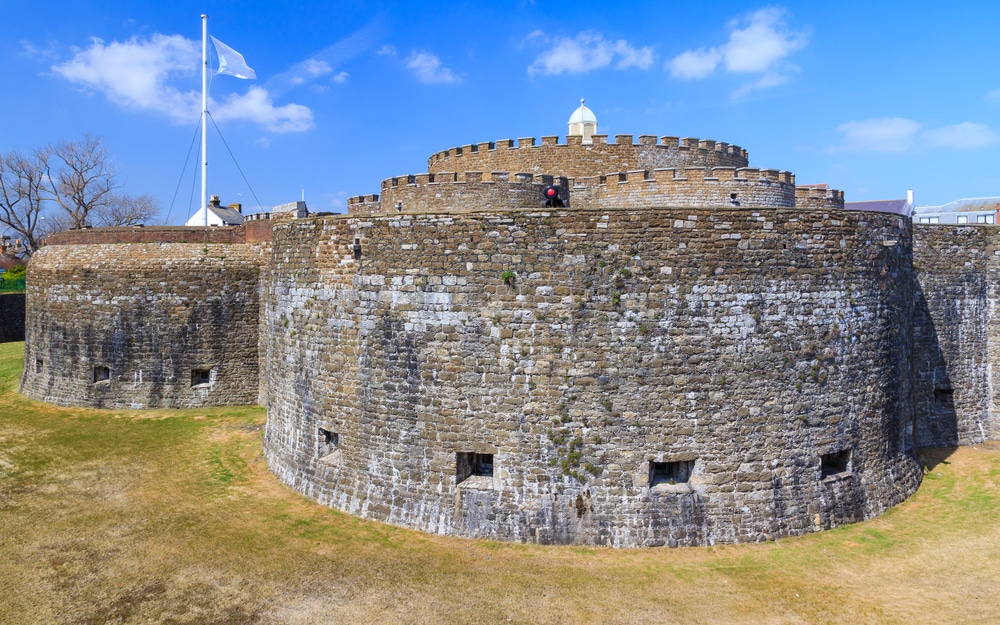
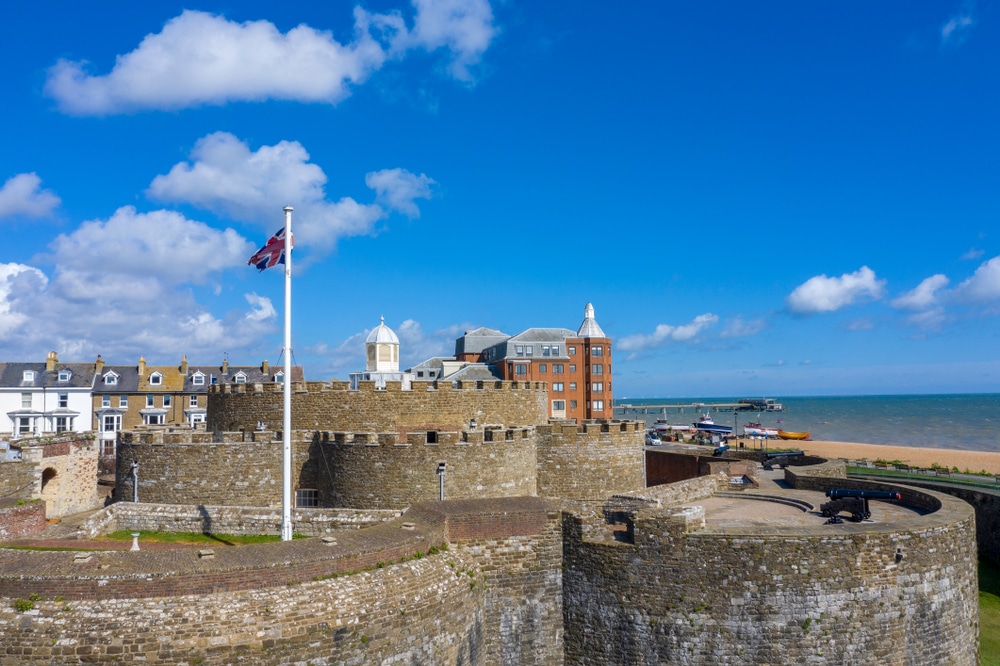
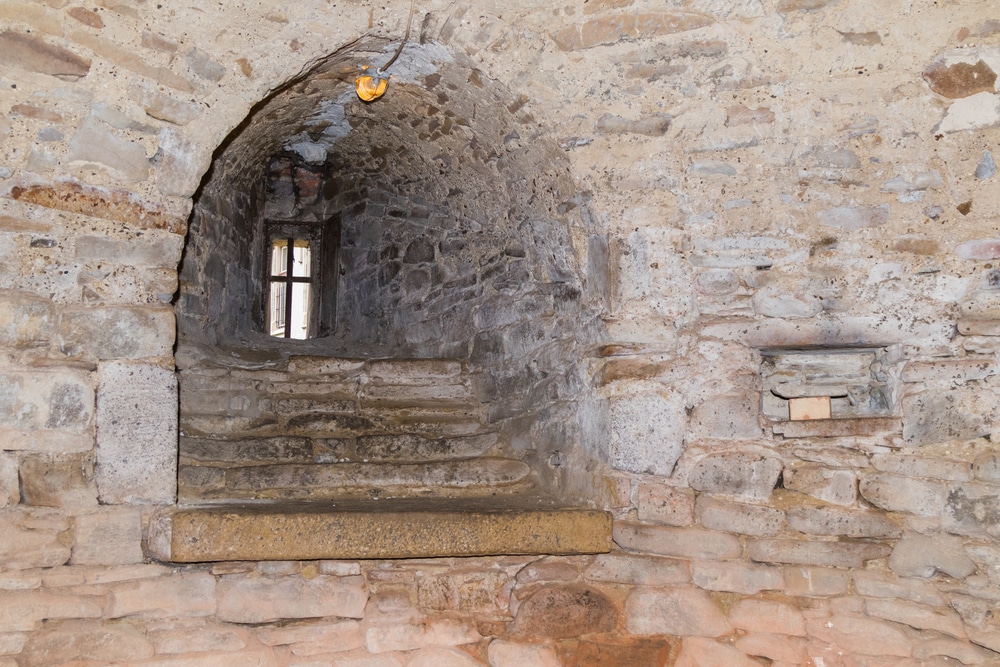
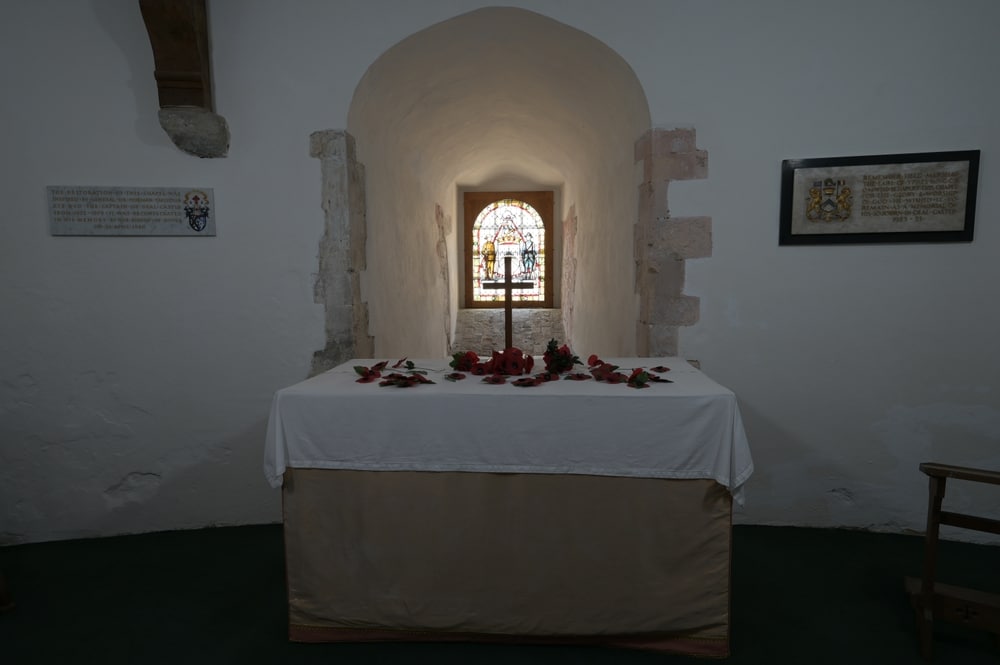
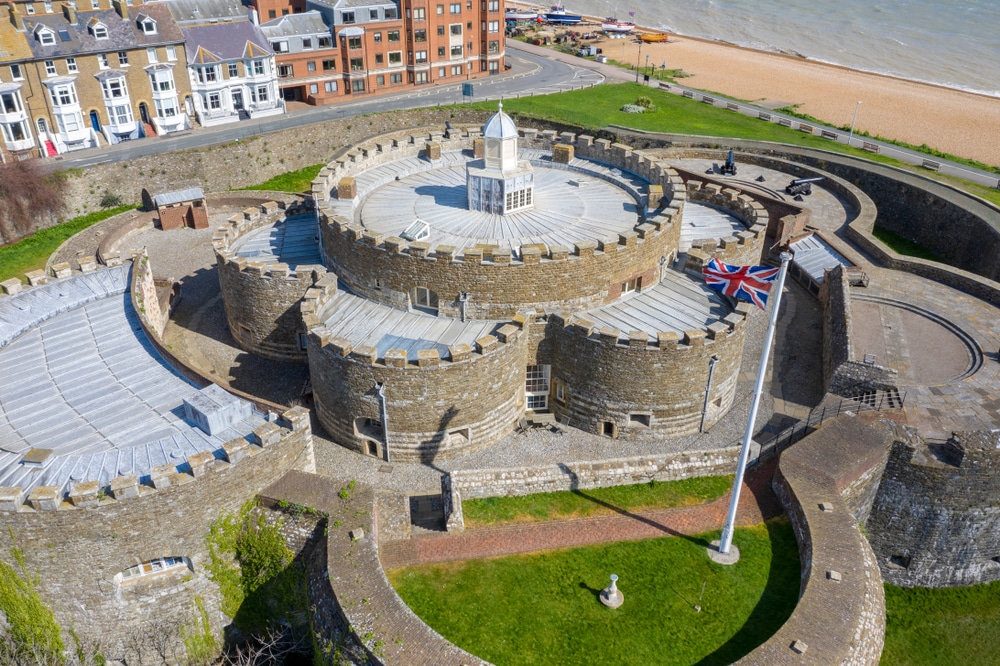
Images Supplied and licensed from Shutterstock Standard Licence Package
What Can I See During Visit to Deal Castle?
- Take in the waterfront view. Deal Castle offers magnificent views of the sea from various vantage points. Guests can climb to the top of the keep to breathe in the salty air while peering out at the breathtaking seaside.
- Explore the underground passages. Under the keep, there are multiple passages once used to protect Deal Castle and the nearby village from assault by enemy forces. Before roaming the underground paths, children are offered a toy musket to play with during the self-guided tour.
- View the interactive exhibit. The on-site exhibits showcase the bloody history of the artillery fort, and its integral role in defending the Downs. Visitors will hear stories of those who lived and worked in the castle, and see a map of Europe that explains what was happening when the castle was built. The exhibit also includes various items discovered on the site of Deal Castle, including weaponry dating from the Tudor era.
Deal Castle Facts
- Thousands of soldiers died near Deal Castle. In 1809, the English planned an attack on the Netherlands to thwart the French. Over 40,000 soldiers made their way to Deal to embark on the planned military voyage. Unfortunately, the plan was an utter failure after thousands of men died from malaria. The nearby Deal hospital was packed to the brim with the dead and dying.
- Deal Castle features graffiti dating to the 18th-century. At the top of the castle, various images and words have been scrawled into the lead surface by people no longer living. Random civilians, soldiers, and others whom we know little about have left their imprint on the castle. Although this area is no longer accessible to tourists, you can view a gallery of the graffiti on the English Heritage website.
- A bloody battle took place in sight of Deal Castle. During the Battle of the Downs, an attack on the Spanish by the Dutch took place under the watch of Deal Castle and other castles along the coast. The English couldn’t stop the Dutch from all-but-destroying the Spanish fleet. As a result, thousands of Spanish sailors died and many were forced to shore.
- Ghost hunters claim to have experienced paranormal activity at the castle. With such a long military history and a vast number of men who lost their lives at the castle and at sea, it’s no wonder that people believe ghosts roam Deal Castle. One ghost hunter claims to have experienced a sudden burst of cold air while exploring a passageway.
Deal Castle Q&A
Is Deal Castle Worth a Visit?
Deal Castle is worth a visit, as guests can explore the keep, bastions, and numerous underground passageways. Children can enjoy playing with wellies and toy muskets as they explore the grounds and take in the history of the over 500-year-old structure that once defended the coast line.
Who Lived in Deal Castle?
Hundreds of people lived in Deal Castle over its 500-year history. The garrison resided within the keep’s ground level, and the castle captains used the site as a residence while serving on their post. Captains included Thomas Wingfield, William Byng, Colonel Rainsborough, and Sir John Norris.
How Long Does It Take to Go Around Deal Castle?
It takes approximately one hour to go around Deal Castle and explore all it has to offer. Visitors may spend up to two hours here, taking in the seaside views, roaming the underground passageways, and visiting the gift shop. Keep in mind that on-site parking is limited to three hours per vehicle.
Who Owns Deal Castle?
English Heritage owns Deal Castle. The organisation acquired the castle in the early 21st-century and opened the site to the public. Visitors can explore the grounds and learn more about the history of this well-preserved, Tudor artillery fort.
Location of Deal Castle
Deal is a seaside village in Kent, England. The city boasts a long history as a port town and features numerous historic streets and buildings. Despite being a growing seaside resort, Deal maintains a quaint, small-town atmosphere. In 2022, Deal was listed as one of the top places to live in the United Kingdom.
Visitors can walk along the Deal Pier — the last leisure pier in Kent — and take in the scenic sea views, or explore many of the small businesses that line the promenade.
There are multiple restaurants to choose from, two castles, and several museums, including those on the castle grounds, as well as the Deal Maritime and Local History Museum, Timeball Tower Museum, and the Kent Museum of the Moving Image.
Other Places To Visit Near Deal Castle
Victoria Park
Located in East London, Victoria Park is a popular park with millions of annual visitors. The park boasts over 86 hectares (213 acres) of open, grassy area where people can enjoy picnics, indulge in nature, view the fountains, admire the statues, and observe the remains of the London Bridge. The park is situated .5 kilometres (.3 mi) west of Deal Castle, about a one-minute drive or six-minute walk.
Walmer Castle and Gardens
Walmer Castle and Gardens is an English Heritage site located approximately 2 kilometres (1.3 mi) from Deal Castle. The castle shares many similarities with Deal Castle, as it was built at the order of Henry VIII as part of the coastal forts to protect the Kentish coast. Visitors can explore the castle, learn more about its history, and view many of the artwork and other objects from various eras throughout its history.
Richborough Roman Fort and Amphitheatre
The Richborough Roman Fort and Amphitheatre boasts the ruins of an ancient 4th-century Roman amphitheatre and fort. Long ago, the amphitheatre hosted a wide array of shows, including gladiator fights, executions, and the hunting of ferocious beasts. The fort was used to protect the area, and is now Richborough’s focal point.
Sources
- English Heritage: Deal Castle - Directions
- Dover District Council: Parking in Deal
- English Heritage: Deal Castle - Prices & Opening Times
- Southeastern Railway: Deal
- Regent Coaches: Home
- English Heritage: Deal Castle - Facilities
- The Clarendon Hotel: Ghost Tours at Deal Castle
- Facebook: Events - Deal Spring Festival
- English Heritage: Deal Castle - Events
- English Heritage: Deal Castle - Group Visits
- English Heritage: Deal Castle - History and Stories
- English Heritage: Maritime Decline and the Battle of the Downs
- English Heritage: Deal Castle - History of Deal Castle
- English Heritage: Deal Castle - Things To See and Do
- English Heritage: Deal Castle - Graffiti at Deal Castle
- Times of India: Travel - Deal Castle’s Ghostly Sailor
- Tower Hamlets: Victoria Park
- English Heritage: Walmer Castle and Gardens
- English Heritage: Richborough Roman Fort and Amphitheatre
